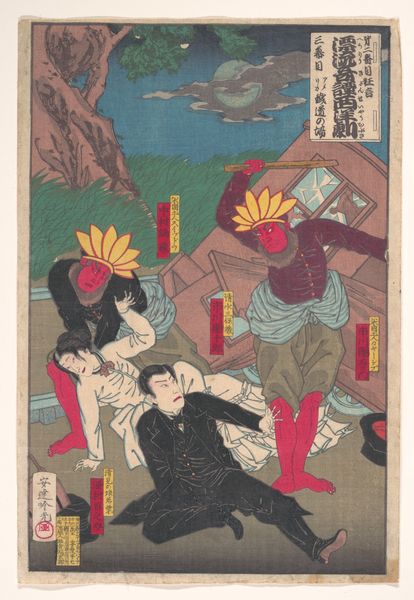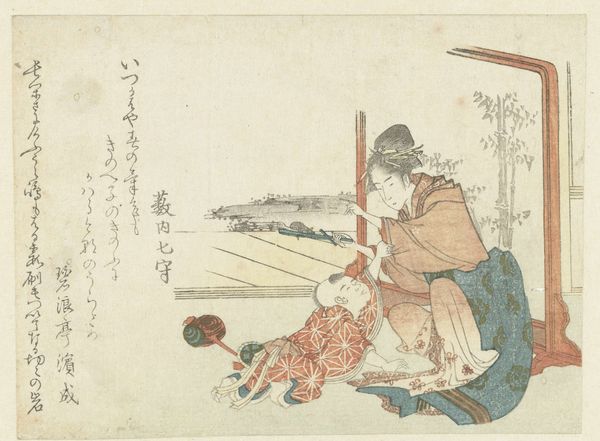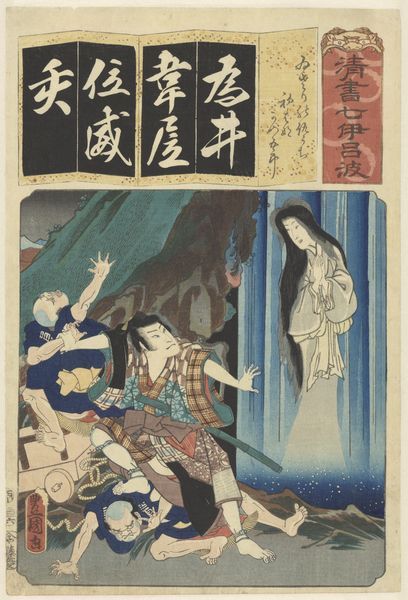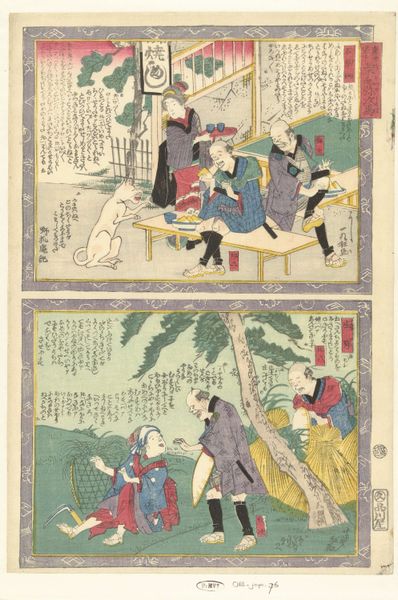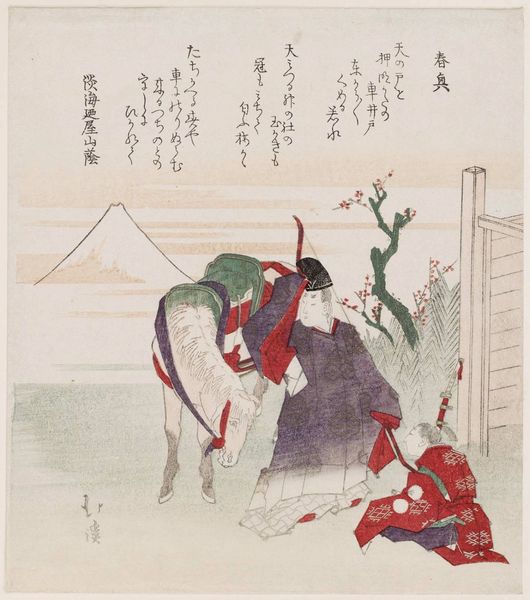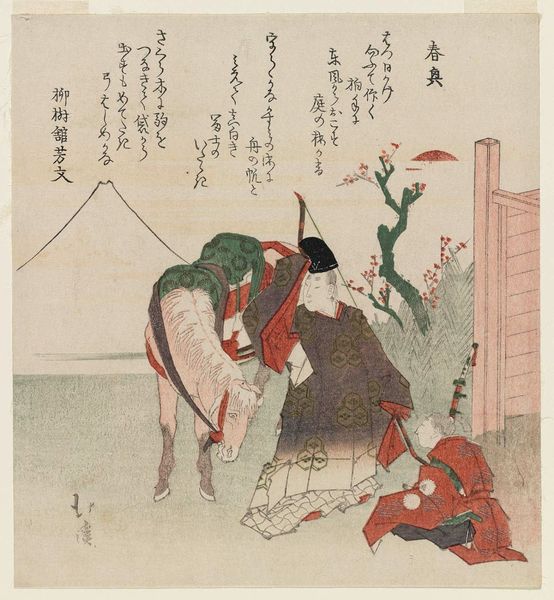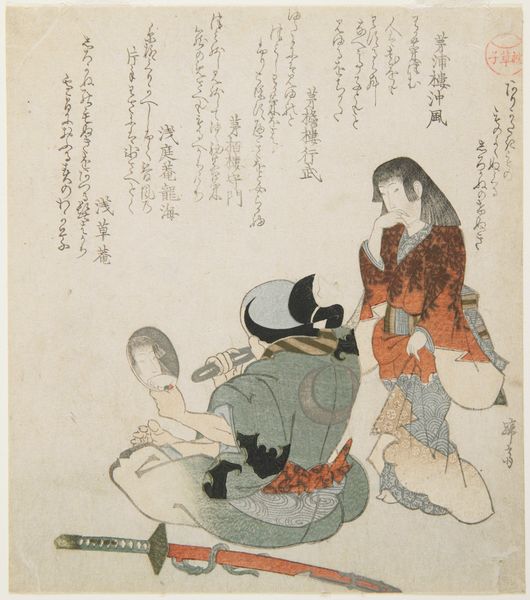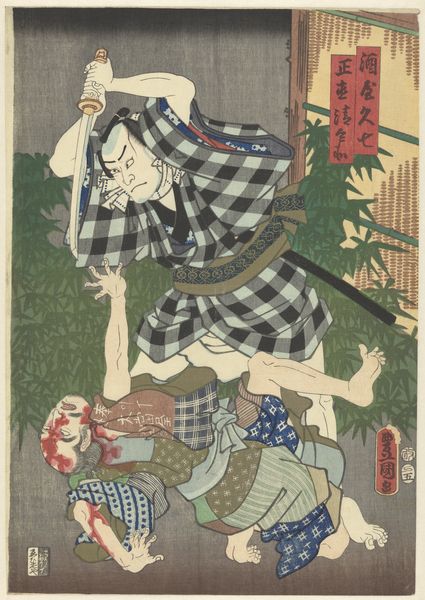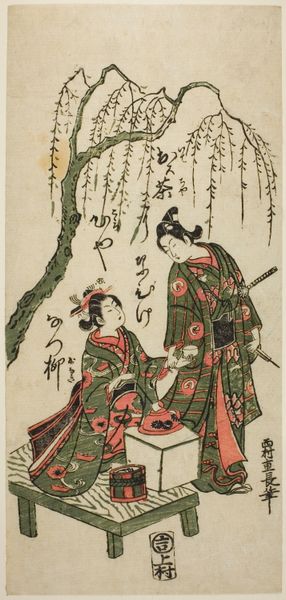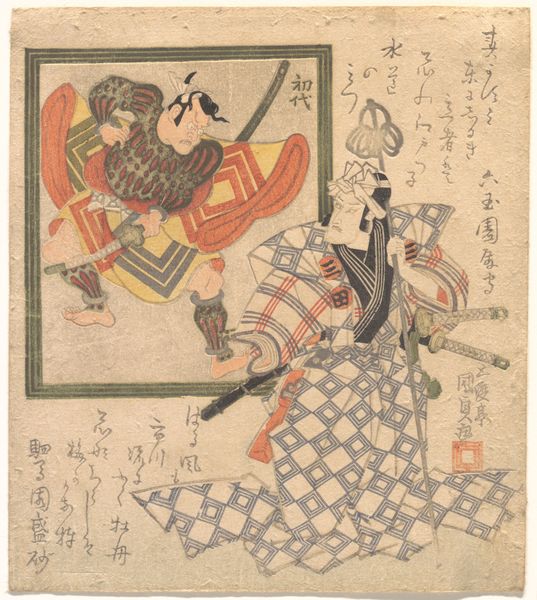
Cai Shun (Sai Jun), from the series "Twenty-four Paragons of Filial Piety in China (Morokoshi nijushiko)" c. 1848 - 1850
0:00
0:00
#
narrative-art
# print
#
caricature
#
asian-art
#
caricature
#
ukiyo-e
#
japan
Dimensions: 25.1 × 17.8 cm (9 7/8 × 7 in.)
Copyright: Public Domain
Curator: Looking at this woodblock print, I am struck by its immediacy. Editor: Agreed. There is an air of something unsettling in the atmosphere that contrasts with what I understand to be a children's story. What can you tell me about it? Curator: The work is by Utagawa Kuniyoshi, from around 1848 to 1850. Its title is "Cai Shun (Sai Jun), from the series "Twenty-four Paragons of Filial Piety in China (Morokoshi nijushiko)." The Art Institute of Chicago holds this print as part of their Ukiyo-e collection. Kuniyoshi was well-known for depicting historical and legendary figures, and these "Paragons" were moral exemplars. Editor: So it's part of a moral narrative, interesting. But that makes the violence here even more striking. I mean, there's a kid, and a man with a sword and a torch in a rather hostile stance, but I guess that context matters when you think about the purpose and social role that art might serve... Curator: Exactly. In the original story, Cai Shun, facing starvation, separated himself from his son and foraged mulberries to survive, and even separated them by color, as to sell them and avoid sampling any that were ripe and that might lead others to be bitter from what was less appealing. His display of loyalty and sacrifice to his community earned respect for its contribution to a greater good. Kuniyoshi renders a darker version in order to convey an important idea that reflects Japanese expectations in his own cultural milieu. Editor: So the dramatic rendering here elevates that moment of choice, doesn't it? I'm curious how contemporary audiences interpreted Kuniyoshi's vision of moral action versus his approach to more fanciful narrative themes...it's an intriguing glimpse into cultural values! Curator: Exactly. What is being represented goes well beyond that immediate dramatic tension you initially sensed, it speaks to the complicated ways artists mediate public expectations and cultural mores. Editor: This has completely flipped my reading of the composition; it felt strange to see that narrative thread represented so vividly in print, and thinking more about that tension, this opens my eyes to a lot more. Curator: Absolutely. Kuniyoshi invites us to consider how displays of moral courage resonate across cultures and time.
Comments
No comments
Be the first to comment and join the conversation on the ultimate creative platform.
